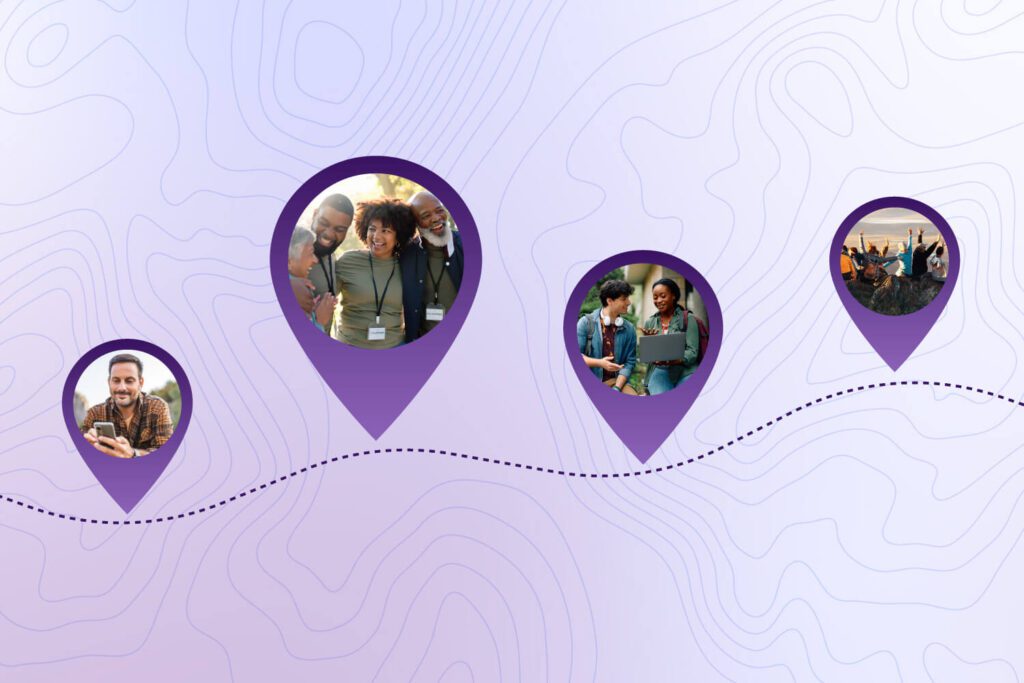Meet the Moment: Five ways nonprofits can build resilience amid funding disruption

The nonprofit sector is at a crossroads. Funding streams are shifting, demand is rising, and too many organizations are being forced to do more with less. Amidst all this however, there is cause for optimism. Nonprofits are already innovating, collaborating, and advocating in ways that show what strong financial resilience can look like.
That’s the message that came through loud and clear during Bonterra’s recent webinar, Meet the Moment: Navigating Funding Disruption. Drawing on survey data from more than 2,600 nonprofits and 100 funders, as well as the lived experiences of nonprofit leaders, the conversation underscored a simple truth: disruption is real, but so is opportunity.
A wake-up call for nonprofits and funders
Bonterra’s Chief Fundraising Officer Kimberly O’Donnell shared sobering data:
- Over half of federally funded nonprofits say they’re financially unstable.
- Nearly half have already cut programs or staff.
- Demand for services continues to rise across civic and health organizations.
- Even the largest nonprofits aren’t immune.
And while nonprofits scramble to adapt, only 38% of funders say they feel prepared to respond. This gap between nonprofit need and funder readiness is one reason why building resilience can’t wait.
Download the Meet the Moment report for the full dataset.
What resilience looks like in practice
Our panelists brought the numbers to life with real strategies from the frontlines:
- Justice for My Sister is pairing flexible funding conversations with new social enterprise revenue streams. By renting equipment and supporting participant-led projects, they’re diversifying beyond traditional grants.
- I Live Here I Give Here is doubling down on community collaboration. Through Amplify Austin Day powered by Bonterra technology, they raise $10M annually for local nonprofits while hosting ED roundtables that normalize tough conversations about risk.
- Feeding Texas is proving the power of advocacy and alignment. By integrating food into healthcare delivery systems and offering tiered funding options, they’re turning donors into advocates and advocates into donors.
The common thread: resilience isn’t about weathering disruption, it’s about using disruption as a catalyst for smarter, more sustainable growth.
Five actions nonprofits can take now
The webinar and report surfaced five moves every nonprofit leader should consider:
- Diversify revenue streams to reduce dependence on single sources.
- Build recurring giving programs that stabilize cash flow.
- Leverage technology for personalization and scale, even with lean teams.
- Strengthen advocacy to amplify your mission and unlock new support.
- Pursue values-aligned corporate partnerships that deliver more than money.
These are not one-time tactics. They’re long-term strategies for resilience in a landscape that will keep shifting.
What funders must do differently
Nonprofits can’t meet the moment alone. Funders must step up by:
- Embracing trust-based, multi-year, unrestricted support.
- Acting with urgency — today’s needs can’t wait until next year’s budget cycle.
- Investing in infrastructure and staff, not just programs.
- Coordinating with peer funders to reduce duplication and delays.
Funders who adapt in these ways will not only help stabilize nonprofits, but also strengthen the communities those nonprofits serve.
Don’t forget the human side
Resilience isn’t just financial. It’s cultural. Leaders emphasized the importance of prioritizing staff well-being—because burnout, turnover, and mission fatigue are real threats to impact.
Healthy organizations are finding creative ways to care for their teams: implementing wellness days, offering quarterly volunteer opportunities, and encouraging open dialogue about challenges. They’re also investing in professional development, ensuring staff feel equipped to navigate rapid change, and using data and technology to lighten administrative load so more energy goes toward mission-critical work.
The takeaway is clear: sustainable impact starts with sustainable teams.
Meet the Moment with Bonterra
Disruption is inevitable, but resilience is a choice. With the right tools, partnerships, and strategies, nonprofits can transform uncertainty into sustainable progress.
Bonterra helps organizations build that resilience by connecting people, programs, and partners across the social good ecosystem—so every action, insight, and relationship drives greater impact for the communities you serve.
Download the Meet the Moment report to explore the data.
Watch the webinar on-demand to hear directly from the panelists.
Work with Bonterra



